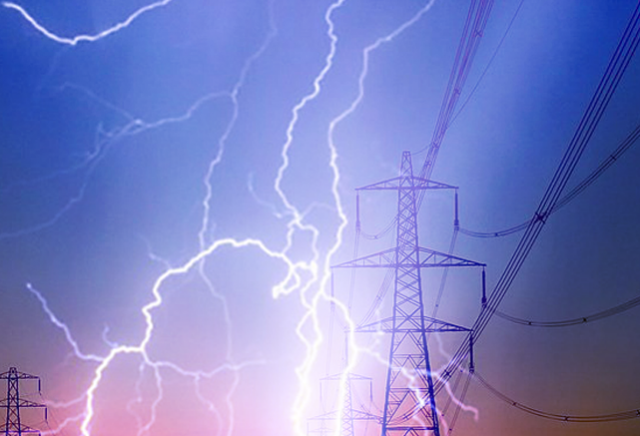Abstract
Hazardous areas, particularly those containing flammable gases, vapors, or dust, are highly susceptible to ignition from lightning-induced transients. Ensuring proper lightning protection in such environments is not only a safety necessity but also a regulatory requirement. This article outlines the recommended lightning protection requirements for hazardous areas in compliance with international standards such as IEC 62305, IEC 60079, NFPA 780, and API RP 545.
1. Introduction
Industrial facilities such as oil refineries, chemical plants, gas processing units, and storage terminals operate in environments classified as hazardous due to the presence of explosive atmospheres. A lightning strike — whether direct or indirect — poses a significant threat in such areas, potentially leading to fires, explosions, or equipment damage. It is essential to implement a comprehensive lightning protection system (LPS) tailored to the specific requirements of hazardous zones.
2. Applicable International Standards
The design and installation of lightning protection systems in hazardous areas must adhere to the following international standards:
| Standard | Title | Purpose |
|---|---|---|
| IEC 62305 (1–4) | Protection Against Lightning | Design principles for external and internal LPS |
| IEC 60079-14 | Electrical Installations in Explosive Atmospheres | Guidelines for selection and design of electrical systems |
| IEC 60079-10 | Classification of Hazardous Areas | Area zoning for gas and dust environments |
| NFPA 780 | Installation of Lightning Protection Systems | North American guideline for LPS design |
| API RP 545 | Lightning Protection for Aboveground Storage Tanks | Industry-specific guidance for petroleum facilities |
3. General Lightning Protection Requirements
A standard LPS for hazardous zones consists of the following subsystems:
3.1. Air Terminals (Lightning Rods)
- Installed using the rolling sphere or mesh method per IEC 62305-3.
- Should be positioned to prevent any direct strike within hazardous zones.
3.2. Down Conductors
- Must be routed away from Ex-rated equipment and wiring.
- Should maintain spatial separation to minimize induced voltages.
3.3. Earth Termination System
- Ground resistance should be ≤ 10 Ω or as low as possible.
- A ring-type earthing system is preferred around hazardous zones.
3.4. Equipotential Bonding
- All conductive parts (pipes, structures, tanks) must be bonded to avoid potential differences.
- No isolated conductive materials should remain in the hazardous area.
3.5. Surge Protection Devices (SPDs)
- Use Type 1 SPDs at power entry points.
- SPDs must be certified for use in explosive atmospheres (ATEX/IECEx compliant).
4. Lightning Protection in Hazardous Zones
4.1. Zone 0
- No LPS components should be installed within Zone 0.
- Only intrinsically safe, non-sparking materials may be used.
4.2. Zones 1 & 2
- Flameproof or intrinsically safe LPS elements may be installed.
- Ex-rated junction boxes and grounding conductors must be used.
4.3. Aboveground Storage Tanks
- For floating roof tanks, follow API RP 545:
- Use shunted bypass conductors or slip ring assemblies.
- Ensure reliable roof-to-shell bonding to avoid arcing.
5. Design Considerations and Best Practices
5.1. Risk Assessment
- Conducted as per IEC 62305-2.
- Determines the Lightning Protection Level (LPL) and protection class (I to IV).
5.2. Separation Distance
-
- Maintain a minimum separation distance s between LPS and internal systems:

- where
 are defined in IEC 62305-3.
are defined in IEC 62305-3.
- where
- Maintain a minimum separation distance s between LPS and internal systems:
5.3. Ex-Rated Components
- All LPS components installed within hazardous zones must have explosion protection certification.
5.4. Inspection and Maintenance
- Annual inspections are mandatory.
- After each known lightning strike, a full inspection should be
conducted.
6. Typical Features of Hazardous-Area LPS
- Isolated LPS using ESE rods (Early Streamer
Emission) for petrochemical plants. - Ground ring electrodes surrounding the facility.
- Insulated down conductors to minimize induced
voltage near instrumentation. - Lightning event counters for recording strikes.
7. Conclusion
Implementing a compliant and reliable lightning protection system in hazardous areas is essential for safeguarding personnel, facilities, and the environment. Adherence to IEC 62305, IEC 60079, and other applicable standards ensures a high level of protection while fulfilling statutory
obligations. A well-designed system incorporates not just external protection, but also bonding, earthing, and surge protection tailored to the risk profile of the installation.
